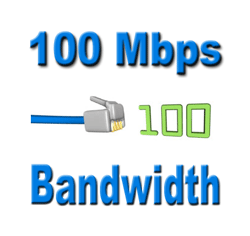For many businesses, 100 Mbps bandwidth is no longer optional. This level is necessary for essential functions like remote backups, cloud-based applications, content distribution, and large file sharing (e.g., high-resolution medical images). Older technologies like T1 or DS3 connections are inadequate. So, what options are available and affordable?
OC-3 SONET fiber optic bandwidth is a traditional service offering this capacity, used by large companies for decades. However, high costs previously limited its wider adoption.
The good news is that OC-3 prices have dropped significantly in recent years. Medium-sized businesses, medical organizations, and smaller high-tech companies requiring high bandwidth can now consider OC-3. However, is it the best option?
Besides cost reductions, the emergence of competitive technologies provides alternatives for 100 Mbps bandwidth. Let’s explore these options.
Ethernet over Fiber is a significant competitor to SONET, utilizing the same fiber optic infrastructure but transmitting a different signal. This difference is inconsequential for businesses as both deliver comparable performance. However, Ethernet offers notable advantages, primarily cost savings.
Ethernet’s affordability stems from competition and network construction methods. Developed by the telephone industry, SONET delivery almost always involves a telephone company, which impacts costs.
In contrast, Ethernet originated from the computer industry and gained traction as a LAN technology. While traditional telecom companies offer Ethernet, other carriers have emerged, focusing solely on Ethernet services.
Unlike SONET, competitive carriers often manage the entire Ethernet over Fiber network, including the connection to your building. This approach is particularly attractive for multi-tenant offices, leading to competitive pricing.
Another bandwidth solution is eliminating wires altogether through microwave wireless services. In specific locations, 100 Mbps bandwidth is achievable via a rooftop antenna receiving a radio beam.
The ideal location is typically a downtown business district within a major metropolitan area. Microwave transmissions require a direct line of sight and a short range, limited to a few kilometers. This option suits businesses with unobstructed rooftop access to a provider’s tower, offering quick installation and minimal construction costs.
All these services are classified as symmetrical dedicated bandwidth. OC-3 provides 155 Mbps, while Fast Ethernet offers 100 Mbps, among other service levels. Symmetrical denotes equal upload and download speeds (e.g., 100 x 100 Mbps represents 100 Mbps for both upload and download). Dedicated signifies exclusive bandwidth allocation, remaining unused until required.
Companies with less demanding needs, primarily focused on basic internet access, can opt for asymmetrical shared bandwidth services for cost savings. For example, coaxial cable connections offering up to 100 Mbps download and 10 Mbps upload speeds, where actual speeds fluctuate based on shared bandwidth usage.
If you require increased bandwidth but are concerned about costs and availability, explore all options available in your area.
Get prices and availability for high bandwidth providers that service your business location.


